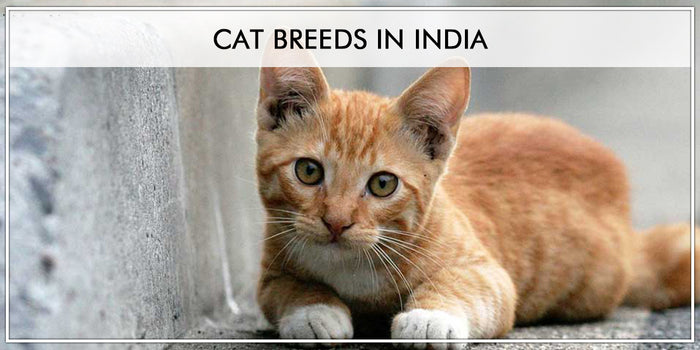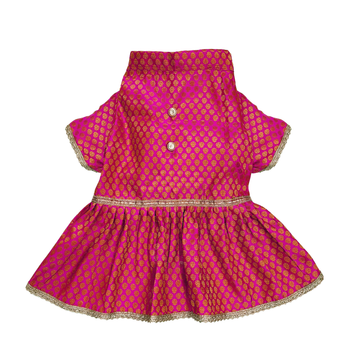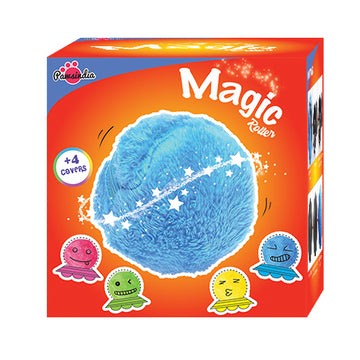12 Most Popular Dog Breed in India 2023
Our nation is well known for a variety of distinctive items, like Bollywood, the Taj Mahal, butter chicken, delectable Indian curries, and more. But did you know that some of the most unusual and fascinating dog breeds in the world originated in India?
It should come as no surprise that India, the second-most populated nation, has a wide variety of fascinating dog breeds, both native and imported. The number of stray canines in the Asian nation is estimated to be above 30 million! Additionally, the broad and distinctive locations offer us an ideal environment for the development of unusual breeds.
And unlike breeds from smaller nations, Indian dogs appear to differ significantly more in terms of appearance, personality, and unique qualities. Following that, here are 12 great Indian dog breeds that you've probably never heard of but that you should see.
Indian Canine Strains
Due to a recent rise in the desire for western dog breeds, the majority of India's indigenous dog breeds are swiftly approaching extinction. Due to this trend, foreign dogs are being overbred while Indian dogs are being underbed.
The nearly extinct native dogs of India are still regarded as rare breeds today, despite the efforts of individuals and organisations there. Even if you are in India, it will be challenging to find the majority of Indian breeds.
- Gull Terrier:
The Gull Terrier is a historic breed of terrier that originated in the Punjab region of Pakistan and India. Given the striking physical similarities, historians claim that the British Bull Terriers are their ancestors.
The Gull Terrier originated in India under the reign of the British Empire. Several foreign canines, including the Bull Terrier, were brought into the nation by the British when they arrived. The popularity of the Bull Terrier soared. Following this, Bull Terriers were crossed with indigenous landrace breeds to create the Gull Terriers that are familiar to us today. The Gull Terrier didn't stop there, though. To develop even more distinctive Indian dog breeds, they were crossed with other indigenous breeds.
- Gull Dong:
Despite some historians' claims to the contrary, the uncommon dog breed known as the Gull Dong is believed to have originated in Pakistan. This breed has been known by several names over the years, including Indian Bulldog and Bully Gull Terr. Gull Dong, though, seems to have endured.
By breeding the Gull Terrier with the local Bully Kutta, these dogs were created. Similar to the Bully Kutta, their bully side gave them a certain hardness that made them desirable combat dogs in the past. They still take part in unlawful dog fights in some instances.
The Gull Dongs and Staffordshire Bull Terrier have many physical characteristics. They feature the small ears and short noses that have come to be known as bulldog-type dogs' "signature qualities." Additionally, Gull Dongs frequently have a short, silky coat.
- Kumaon Mastiff
The ferocious Kumaon Mastiff is a breed of dog that originated in the Indian state of Uttarakhand. They are among India's treasured guardians since they are sturdy and powerful. They are a difficult dog breed to locate, nevertheless.
The Kumaon hill people's cattle were formerly guarded and protected by the Kumaon Mastiff. However, due to their challenges with socialisation and obedience training, the Kumaon Mastiff is at risk of going extinct, just like so many other canine breeds in India.
These Mastiffs have a short, silky coat that is often brindled or brown. They can weigh well over 100 pounds and reach heights of up to 28 inches (at the shoulder). Additionally, they remarkably resemble older, more aggressive Great Danes.
- Sinhala Hound
A breed of dog called the Sinhala Hound was developed in Sri Lanka and several parts of India. These canines' early history is uncertain, and the precise region from which they descended is still up for contention. For a variety of reasons, many continue to attribute India as the origin.
For instance, we are aware of how much Sinhalas resemble Indian Pariah Dogs. Scientists have therefore hypothesised that Sinhalas may have descended from an Indian landrace breed. Naturally, there is still no concrete evidence to support this.
Despite having the appearance of Indian Pariah Dogs, their personalities and skill sets are significantly dissimilar.
- Mahratta Greyhounds:
Even in their home country, Mahratta Greyhounds are one of the rarest breeds of Indian dogs. It's uncommon to encounter these dogs outside of Maharashtra, where the majority of them still live today.
They are frequently contrasted with the dog breed known as Saluki. Mahratta Greyhounds are around 21 inches tall, however, they are a little shorter. The Mahrattas are tough, with a robust physique and lean chest, like other sighthounds.
Even if the coat is short, it is sufficient to shield the dog from the harsh elements of the Indian landscape. The legs are small but surprisingly strong, allowing them the quickness and agility needed to pursue prey. They made excellent hunters.
- Vikhan Sheepdog:
Few locals have ever heard of the Indian breed known as the Vikhan Sheepdog. They came from the northern Indian state of Himachal Pradesh. Vikhans can also be found in Pakistan's bordering areas, despite their origins.
The Vikhan was primarily bred to defend animals, like the majority of sheepdogs. However, it's their tenacity and bravery that make them skilled leopard hunters. The Vikhans became adaptable working and hunting dogs as a result.
Unfortunately, because these dogs are very rare Indian dogs, we don't know a lot about them. Because so few people have even heard of them, no one knows how close to extinction they are. Even fewer are working to save the environment.
Perhaps the most well-known and well-liked canine breed to have its roots in India is the Chippiparai dog. They are the type of dog that most people think of when they hear the term "Indian dog." However, there are several explanations for why this is.
This dog was developed in Chippiparai, Tamil Nadu, a region close to the Madurai district, to hunt small game-like pigs and rabbits. And occasionally they were capable of taking down prey as large as deer. When hunting was outlawed in India, canines that were once highly esteemed saw their function abruptly disappearing.
From that point on, racing dogs became their main focus. Additionally, they were once canine companions to India's highest social class. The Chippiparai is currently regarded as a representation of majesty and grace.
- Rampur Greyhound
An endangered dog breed from India's West Bengal region is the Rampur Hound. They are among the most well-known dogs to have originated in India. Even though they are uncommon, you can still find them in India's northern regions.
These dogs once had popularity, especially among Indian royal families. According to historians, they were the maharajas of India's preferred dog.
In the past, Rampurs have played a variety of roles. For instance, according to the locals, a single Rampur can easily take down a jackal. Additionally, when hunting in packs, they take on dangerous huge animals like tigers, leopards, panthers, and even lions.
The Tamil Nadu region of India is home to the Indian dog known as the Kombai. They were developed to hunt bison, deer, and wild boar. They are appropriately referred to as "Indian Terriers" since they are a breed that most closely resembles the terrier family of canines.
Although there is evidence to suggest they may have existed as early as the ninth century, this old dog breed may be traced back to the 15th century. They had a long military history and were crucial to the Marudhu brothers' uprising against the British.
India's breeders and kennel organisations are working to repopulate the nation with this cherished breed. And it's effective! In parts of South India, kombais are still abundant and are frequently used as household dogs.
- Tangkhul Hui:
The Tangkhul Hui, also known as the Awang Huijao, was developed as a hunting dog that could dispatch dangerous boar and other creatures in India's lush jungles. However, the Urkhul district in the state of Manipur is where they are most frequently found.
Although they are a very rare breed of dog, these canines are still present in their native area. The Tangkhul Hui may have descended from Myanmar dogs decades ago, according to historians. Indian legend, however, asserts that they diverged from Asiatic black bears.
This Indian myth most likely originated from the uncanny likeness of the two creatures' muzzles. In addition, despite the Tangkhul Hui's status as an endangered species, many Urkhul district communities and enthusiasts are working together to repopulate this breed.
- Bakharwal:
There are other additional names for these enormous dogs from India, including Gujjar Watchdog, Kashmir Sheepdog, and Kashmir Mastiff. We'll simply refer to them as Bakharwal Dogs. It's no joke, these dogs. They are strong, agile dogs with excellent heft.
The Bakarwal and Gujjar tribes in the state of Jammu and Kashmir developed the working dog known as the Barkharwal. Although they were primarily used to watch and protect cattle, they were incredibly adaptable dogs who assisted in all facets of village life.
According to Indian tradition, the ancient Barkharwal sprang from a wolf and Molosser sheepdog hybrid hundreds of years ago. But regrettably, the Bakharwal dog is now in danger of going extinct.
- Jonangi:
The Andhra Pradesh state of India is home to the hypoallergenic Jonangi dog breed. They were developed to hunt other animals as well as herd ducks for the nearby farmers. What an intriguing pairing, yes?
However, the Jonangi's brief period of popularity was short-lived. Farmers in the Kolleru Lake region eventually started to gradually switch from hunting ducks to other, more lucrative aquatic creatures. The once-in-demand Jonangi was therefore no longer required.
They were left to fend for themselves in the wild after being abandoned by farmers. The sad truth is that in order to survive, these canines had to learn efficient fishing methods. They eventually turned into a nuisance for the nearby fish farmers, which sparked a killing frenzy.
It doesn't help that Indians still avoid domesticated dog breeds. There was a tonne of cross-breeding when foreign dog breeds arrived. Additionally, the government had little desire to protect indigenous purebred dogs.
Even worse, Indian kings who kept dogs as pets actually favoured exotic breeds. The only people who tried to preserve it were British dog lovers. And while many organisations in India are working to repopulate these canines, for many it is already too late.
15 Insane Facts About Dogs!
When it comes to man's best friend, there are a ton of fascinating facts to discover. The least we can...
on
7 Most Popular Best Cat Breeds In India : Pawsindia
People often assert that it is impossible to "own a cat," and they aren't entirely mistaken. Cats are possessive; they...
on


































